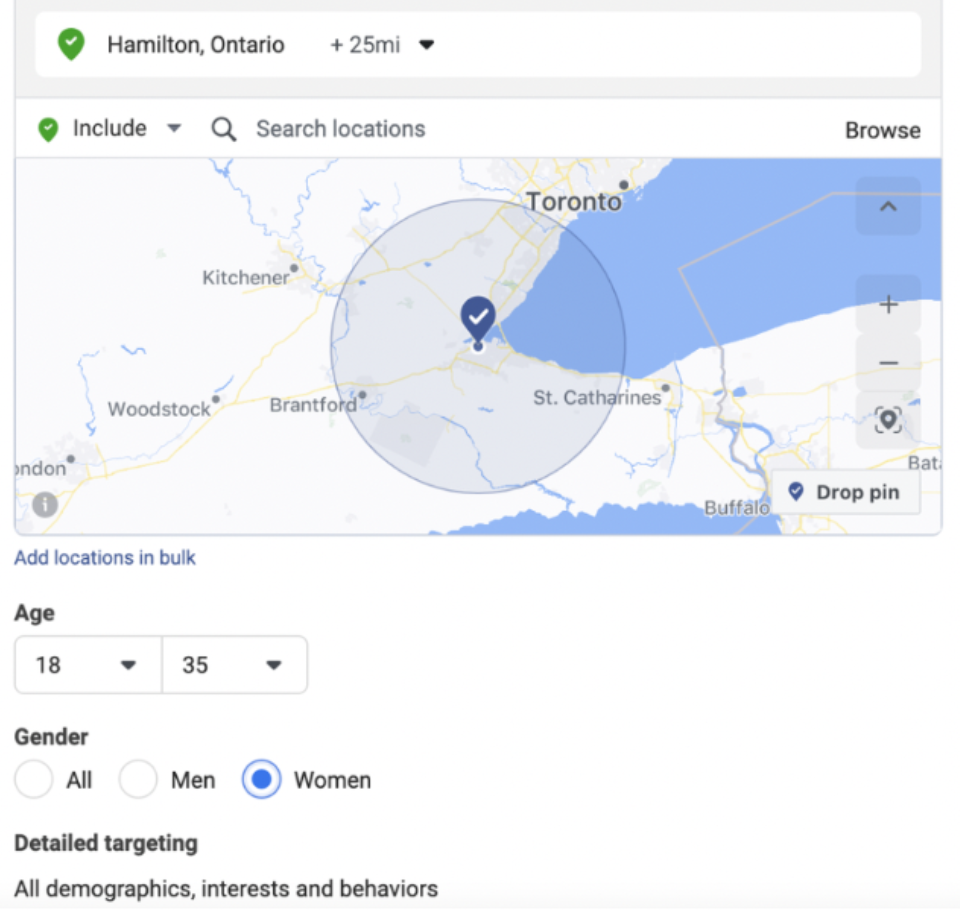Social Media Marketing 101: Building Your Brand Presence Online
Social media is more than just like and share, it's a powerful tool for businesses to connect with audiences, amplify their brand presence and drive growth.
However, diving into the vast sea of social media can be overwhelming for marketing beginners.
Fret not! This beginner's guide equips you with strategies and tips to promote your brand effectively on social media. From picking the right platform to crafting captivating content, we have you covered on the secret recipe to win your social game. Let's get started!
Social Media Marketing Strategy: Step-By-Step Guide
- Define Your Social Media Marketing Goals
- Research Your Target Audience
- Determine the Platform You'll Market On
- Create Engaging and Valuable Content
- Create a Consistent Brand Identity
- Have a Consistent Posting Schedule
- Track, Analyze, and Improve
Contact the experts at Profitworks today to begin your social media marketing campaign.
1. Define Your Social Media Marketing Goals

Determine what your goals are, do you want to generate more website traffic and increase conversions?
Before you dive headfirst into the deep sea of social media, it is essential to take a moment and define your social media marketing goals. This step is like setting your destination on the map before starting your journey so you do not go astray mid-journey.
So what goals do you want to achieve by marketing on social media? Perhaps you want to:
- Increase brand awareness: Small businesses can use social media to increase brand awareness by creating engaging content, sharing customer testimonials, and running targeted ads.
- Drive website traffic: Social media can be used to drive traffic to a small business's website by sharing links to blog posts, product pages, and other relevant content.
- Generate leads: Social media can be used to generate leads by offering exclusive promotions, hosting giveaways, and encouraging users to sign up for email newsletters.
- Build customer relationships: Social media can be used to build relationships with customers by responding to comments and messages, sharing user-generated content, and providing helpful information.
- Increase sales: Social media can be used to increase sales by promoting products and services, offering exclusive discounts, and running targeted ads to reach potential customers.
Once you clarify these goals, you can focus your social media activities in that direction only. This ensures your social media efforts aren't haphazard but aligned with your overall business objectives.
2. Research Your Target Audience

Determine who your demographic is and then target them!
The next important step in your social media marketing strategy is determining your target audience. One way to do this is by creating a buyer persona or a fictional profile of your ideal customer.
To do this, think about the people best suited for your product. Analyze your existing customer base to see if you notice any patterns. For instance, if you own a luxurious makeup brand, your ideal customer may be an urban female with an above average income.
Here are certain things you can consider when determining your target audience:
- Demographics: This includes age, gender, location, income, education level, occupation, marital status, family size, ethnicity, and cultural background. Understanding these factors can help you tailor your marketing messages to better resonate with your target audience.
- Psychographics: This includes factors such as personality, values, attitudes, interests, and opinions. Understanding these factors can help you gain insights into the attitudes, values, interests, motivations, and lifestyle choices of your target audience.
- Pain points: These are the problems or challenges that your target audience is facing. Understanding these pain points can help you tailor your marketing messages to address their specific needs and concerns.
- Goals and Aspirations: These are the things that your target audience wants to achieve or accomplish. Understanding these goals and aspirations can help you tailor your marketing messages to show how your products or services can help them achieve their desired outcomes.
- Buying Behaviour: This includes factors such as purchase patterns, usage habits, and decision-making processes. Understanding these behaviors can help you tailor your marketing messages to better align with your target audience's buying habits and preferences.
Once you get into these details of your ideal customers, you can create marketing campaigns that resonate with them. Your content can effectively address their needs, preferences, goals, and pain points and motivate them to convert.
When determining your target audience for social media marketing, it's important to consider where your audience spends the most time online. By knowing where your target audience hangs out the most, you can concentrate your efforts on the most effective social media channel. This leads us to the next step in your social media marketing strategy!
3. Determine the Platform You'll Market On

There are several platforms you can market one! Continue reading to discover which one is best for you.
When choosing a social platform for marketing, there is no right or wrong answer. It all depends on your target audiences, their need, and where they like to spend most of their time.
For instance, if you're a fashion brand targeting millennials, Instagram may be your first option, as the platform is used mainly by millennials.
The choice also depends on the type of content you want to create. For instance, platforms like Instagram, Pinterest, and YouTube rely heavily on visuals such as images and videos. On the other hand, Twitter and LinkedIn are mainly used for sharing text information, insights, news, quick tips, etc.
Corey from Authority Builders notes that having an active presence on platforms such as Twitter can help to grow trust with news organizations and journalists on platforms such as HARO.
When starting your social media marketing campaign, it can be tempting to jump into every platform. However, that may not always be ideal. It's best to start with one platform and get the hang of social media marketing before moving on to the next.
To help you make the right pick, here's an overview of the major social platforms along with their key features:
Facebook:
- Target Audience: Broad range of demographics; most age groups and interests
- Platform Purpose: Diverse content sharing, personal connections, business pages, groups, and events
- Content-Type: Text, images, videos, live streams, and interactive features like polls
- Engagement Style: Likes, comments, shares, reactions
- Ad Campaigns: Advanced ad targeting options for a large global user base
- Analytics and Insights: Detailed page insights and audience data
- Brand Fit: Suitable for most brands, from B2C to B2B
Instagram:
- Target Audience: Primarily younger demographics; visual and lifestyle-focused users
- Platform Purpose: Visual storytelling, photos, videos, and Stories
- Content-Type: Images, short videos, stories, IGTV, and Reels
- Engagement Style: Likes, comments, direct messages, stories interaction
- Ad Campaigns: Various ad formats and solid visual engagement
- Analytics and Insights: Offers insights for business profiles
- Brand Fit: Best for visually-oriented brands and businesses
- Target Audience: Professionals, B2B connections, and job seekers
- Platform Purpose: Networking, business connections, industry updates
- Content-Type: Articles, posts, videos, company pages, job listings
- Engagement Style: Comments, shares, and professional networking
- Ad Campaigns: Effective for B2B targeting and lead generation
- Analytics and Insights: Offers insights for business pages
- Brand Fit: Ideal for B2B, professional services, and career-focused content
Twitter:
- Target Audience: Broad range of demographics
- Platform Purpose: Real-time news, updates, and quick interactions
- Content-Type: Short tweets, images, videos, links
- Engagement Style: Likes, retweets, replies
- Ad Campaigns: Promoted tweets for a broader reach
- Analytics and Insights: Provides insights on tweets' performance
- Brand Fit: Suitable for brands with frequent updates or news
YouTube:
- Target Audience: Video enthusiasts, tutorial seekers, and educational content consumers
- Platform Purpose: Video content sharing, tutorials, and entertainment
- Content Type: Video content of various lengths and formats
- Engagement Style: Likes, comments, shares, and subscriptions
- Ad Campaigns: Video ads before and during content
- Analytics and Insights: Provides detailed video performance analytics
- Brand Fit: Well-suited for brands with visual and video content
Now, let’s consider the next step in your social media marketing strategy.
4. Create Engaging and Valuable Content

High-quality images are very engaging!
Once you learn about your audience and decide on the marketing platform, it's time to put your knowledge to use and create quality content. High-quality content not only engages your audience but also provides value to them.
To help you get started, study the market and consider the content your competitors share. Also, take advantage of the features available on the platforms of your choice. Consider their unique features and best practices and tailor your content accordingly.
Here are some engaging content types you can incorporate, depending on the platform you use:
- Images: Images are particularly effective in grabbing attention and creating a lasting impression. High-quality product photos or brand graphics can be shared on social media to increase brand awareness and sales.
- Infographics: If you want to share valuable data and facts in an appealing format, then infographics are the way to go. They pack big ideas into small spaces that are easy for human brains to digest and retain. This makes them an effective tool for brands to share information with people.
- Short-form Videos: Short videos are snappier and more attention-grabbing than longer videos. They also do not require extensive scriptwriting, set design, or casting. You can create short videos and reels that educate and entertain customers and share them across channels. The best way to make videos is using an AI video generator as this doesn’t require much time and a lot of efforts. You can even add auto subtitles by using automatic subtitle generator online as subtitles tend to get more attention online.
- Tutorials: Your customers may be struggling to use your products the right way. A tutorial or how-to guide can help them use them correctly. They are also useful for potential customers to understand your product better.
- Behind-the-Scenes: If you run out of new ideas, you can provide a sneak peek into the daily activities of your teams. Your audience gets to see the humans behind your brand and the effort that goes behind the products and services you deliver. It will help them connect with your brand more personally.
- User-Generated Content: You can also get content out of your existing customers and promoters. Encourage them to share their reviews, experiences, or creative use of your product. Ask them to use a hashtag, so you can easily find and repost such content.
- Interactive Posts: Use polls and surveys to engage your audience by asking questions and seeking their opinions. You can also run fun contests or quizzes related to your industry that provide value and entertainment.
Overall, Visual content is an essential part of social media marketing. Images, infographics, short-form videos, tutorials, behind-the-scenes content, user-generated content, and interactive posts are all effective ways to engage your audience and promote your brand.
5. Create a Consistent Brand Identity
Make sure your brand identity is consistent across multiple platforms.
Maintaining brand consistency across social media platforms is crucial for establishing a cohesive brand presence. This is especially important if you plan to market on multiple social media platforms simultaneously.
To achieve consistency, opt for a consistent username or handle and align your profile picture and cover image with your brand identity. This way, users can recognize you wherever they find you.
Similarly, try to employ similar colour palettes, typography, and visual styles across all posts. Consistency creates a recognizable brand image that fosters trust, credibility, and emotional connection with your audience. When your audience sees the same colours, logos, tone of voice, and even types of content across various social media platforms, they start to recognize your brand. Over time, this recognition turns into trust, which is the bedrock of customer loyalty.
Maintaining brand consistency across multiple locations on social media is like conducting an orchestra, where each instrument plays a unique role but must work together to create a harmonious sound. If you do the following you can create a strong brand voice on social media that resonates with your audience and drives engagement:
- Maintain consistency in profile details
- Develop a social media brand style guide
- Align your brand persona with your target audience's personas
Now, let’s consider the next step in your social media marketing strategy.
6. Have a Consistent Posting Schedule

Make sure calendar is in accordance with your posting schedule.
Maintaining an active engagement on social media requires a consistent posting schedule. Establishing a social media calendar can help you plan and organize your content, ensuring that you post regularly and consistently. Consistent posting shows your commitment to providing quality content and helps build trust with your audience. When creating a social media calendar, consider when your followers are most active and post your content then. This way, more people will see your posts, and you will receive higher engagement.
It's important to note that scheduling your posts doesn't mean you should be passive with your content. You should still be proactive with your content by responding to comments and engaging with your followers. After posting, keep an eye on your content for new comments that you can engage with. You can also pose a question matching your content and participate in the conversation. Prioritize quality content and engagement over frequent posting for the best results.
When creating a social media posting schedule, determine your key time slots by doing research on when your target audience is most active. You can also use social media management tools to schedule your posts and sync all of your social channels. This ensures that your posts fire off at the right time and encourages brands to begin working on posts well in advance. Additionally, take extra care when crafting your captions, as they represent valuable real estate when it comes to engagement. Consider the appropriate publishing frequency and the type of content that resonates with your audience.
Overall, consistent posting is crucial for maintaining an active engagement on social media. By establishing a social media calendar and prioritizing quality content and engagement, you can build trust with your audience and drive higher engagement on your social media platforms.
7. Track, Analyze, and Improve

Take the time to track results, analyze your campaign, and make improvements.
To ensure the effectiveness of your social media marketing efforts, it's important to continuously gauge their effectiveness. Every social media platform has analytical tools that show you how your posts are doing, providing valuable insights into your:
- Reach
- Engagement
- Audience demographic
By analyzing these metrics, you can identify what content resonates with your audience the most and what failed to make the mark. Use these insights to refine and improve your social marketing strategies.
It is critically important that you constantly track, analyze and improve your social media marketing strategy because it will help you achieve success. Here are some other reasons why:
- Gain insights into your audience: Social media analytics provides valuable insights into your customers' preferences, behaviours, needs, and pain points. By analyzing these metrics, you can identify what content resonates with your audience the most and what failed to make the mark. This information can help you refine and improve your social marketing strategies.
- Measure effectiveness: Social media analytics helps you measure the effectiveness of your social media marketing efforts. By tracking metrics such as engagement, reach, and conversions, you can determine what's working and what's not and adjust your strategy accordingly.
- Improve customer experience: Audience analysis gives you a deeper understanding of your current and potential customers to help you improve customer experience, brand loyalty, and customer retention.
- Boost ROI: Social media analytics helps you achieve your social media goals, proves what’s working and what’s not, and eventually maximizes your ROI. By identifying the most effective social media strategies, you can allocate your resources more effectively and achieve better results.
To track, analyze, and improve your social media marketing strategy, use social media analytics tools to monitor your performance, identify trends, and adjust your strategy accordingly. By doing so, you can refine your social media marketing efforts, improve customer experience, and drive higher engagement and conversions on your social media platforms.
Begin Your Social Media Marketing Journey!
Now that you're equipped with the necessary information to succeed in your social game, getting started needn't be tough. Research your audience, choose your ideal platform, analyze the current trends, and get going.
Even if you do not strike in the first go, you can use the analytics to figure out room for improvement. That's the beauty of social media marketing; you learn as you go. Using a social media marketing agency is a great way to support your efforts and learn the ins and outs of a successful social media strategy.
If you're determined and consistent, it's just a matter of time before you have the desired engagement and reach on your social channels.
Contact the experts at Profitworks today to begin your social media marketing campaign.

